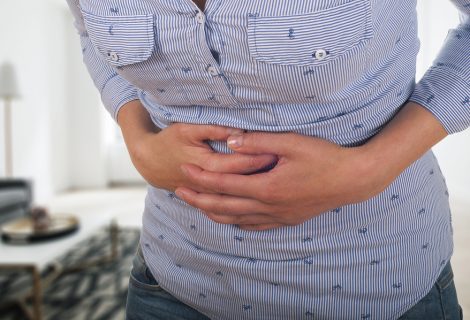Menopause
Understanding Menopause
In a 1972 episode of All In The Family, the theme was menopause:
Archie: Edith, if you’re gonna have a change in life, you gotta do it right now. I’m gonna give you just 3o seconds!
Edith: Can I finish my soup first?
Unfortunately, this what many people, both men and women, still think they know about menopause. Menopause is perhaps the least understood stage of life and arguably the most feared. No other stage of a woman’s life has as much potential for understanding herself both physically and spiritually and thus tapping into significant control and empowerment.
But it’s important to understand the basics. Menopause refers to the cessation of menses or periodic menstruation. It is often referred to as “the change of life” or simply, “the change.” the average age of menopause is currently about fifty-two with a range from forty-five but may be experienced as early as age thirty-nine.
Many women experience menopause at the same age as their mothers.. An important point to remember is that menopause is a gradual biological change. Perimenopause refers to a period of six to thirteen years during which menstrual cycles may stop for several months and then return or may increase or decrease in duration and blood flow.
While some women simply stop having periods and have no symptoms whatsoever, others experience hot flashes, vaginal dryness and decreased libido or sex drive. A blood test is often done at this time to “diagnose” menopause. This consists of measuring the levels of the pituitary gonadotropins FSH and LH hormones produced by the pituitary gland to stimulate the ovary to produce eggs.
During the years of menstruation, FSH and LH peak with ovulation at mid-cycle each month. During the Perimenopause the pituitary gland and the ovaries undergo a gradual change during which ovulations decrease and PSH and LH levels gradually increase. When FSH and LH reach a certain level in the blood, they are said to be in the menopausal range.
These hormonal shifts are frequently the cause of many symptoms associated with menopause. Hot flashes or vasomotor flushes are characterized by a feeling of heat and sweating, particularly around the head and neck. They affect anywhere from 50-85% of women sometime during their menopause of which 10-15% experience hourly waves of heat with drenching sweats causing considerable sleep disturbance and depression.
The actual cause of hot flashes is poorly understood and they usually subside in a year or so.
After menopause some women complain of vaginal dryness and irritation caused by thinning of vaginal tissue associated with decreased estrogen levels. This may be accompanied by an increase in the alkalinity of the vagina resulting in vaginal infections. This symptom is also associated with frequent urination, incontinence and urinary tract infections.
Postmenopausal osteoporosis is one of the most common and disabling diseases affecting women in the US today. It has been shown that 2-5% loss in bone mass per year in women occur over a five year period during perimenopause. However, almost 50% of a woman’s bone loss in her life span occurs before the onset of menopause.
Thus, progressive bone loss in women is due to factors more complex than simply estrogen or calcium deficiency, though these remain important factors. Many other symptoms that have become associated with menopause include but are not limited to heart disease, depression and Alzheimer’s disease. However these illnesses are largely multi-factorial and their influence on menopause remains poorly understood.
Regarding the treatment of menopause, many physicians argue whether menopause deserves a treatment and thereby be regarded as an illness as opposed to a natural state of health.
Many strategies are available for better tolerating the symptoms of menopause. Many women find that hot flashes can be tolerated by avoiding potential triggers such as caffeine, alcohol and stress or increasing your daily exercise, taking Vitamin E and eating foods rich in soy.
Vaginal symptoms can be controlled with water-based lubricants and various vaginal creams containing estrogen. Urinary problems can be avoided with Kegel exercises and biofeedback.
Osteoporosis can be minimized with exercise and calcium supplementation long before the onset of menopause. Some women will make a clear and firm decision to opt for hormone replacement therapy, while others are less certain and others fear it. Hormone replacement therapy must come with an understanding of the risks and benefits.
Hormone replacement therapy has been shown to effectively reduce hot flashes along with sleep disturbance and night sweats. In addition, hormone replacement therapy minimizes changes that occur in the bladder and vagina irritation, avoiding frequent infection and subsequently improving sexual performance and pleasure.. Significantly, hormone replacement therapy helps stabilize bone mass and decreases the risk of fractures and osteoporosis.
However, Hormone replacement therapy is not for everyone. Women with a history of breast cancer, liver or gallbladder disease, thrombophlebitis, stroke and heart disease should avoid hormone replacement therapy. Small and controversial studies have linked oral hormone replacement with and increased risk of endometrial and breast cancers. Whatever your choices may be, it is important to talk with your doctor and maintain routine health evaluations and screening.
With or without the help of hormones, every woman will benefit if she enters menopause consciously knowing there is much more to be gained than lost and the possibility of understanding and empowerment lies within reach of this new stage of life.




